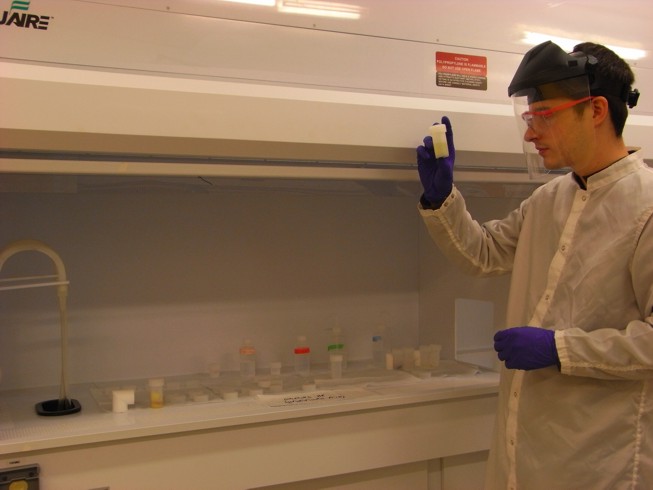
Dave Ferguson (Oxford) in the lab analysing sample of rock collected in the field. Photograph by Talfan Barnie, University of Cambridge.
Experimental Programme Working Group C:
When previous eruptions have occurred and the time scale of magma evolution
Dating the eruptions: In conjunction with the fieldwork and remote sensing studies of working group B, a wide range of different volcanic rock samples will be collected. The approximate date of eruption for these can then be calculated using 40K-40Ar and 40Ar-39Ar radiometric dating.
Dating the silicic magma of the recent eruption: Magma stored in a magma chamber undergoes a process known as fractional crystalisation. This means that the age of the crystals within the magma can be different from the date of the eruption of the magma. The crystals will be older, having formed whilst the magma is still in the chamber. Dating the crystals gives information on the time scales over which the magma has evolved. Dating is done by U-series radiometric dating.
